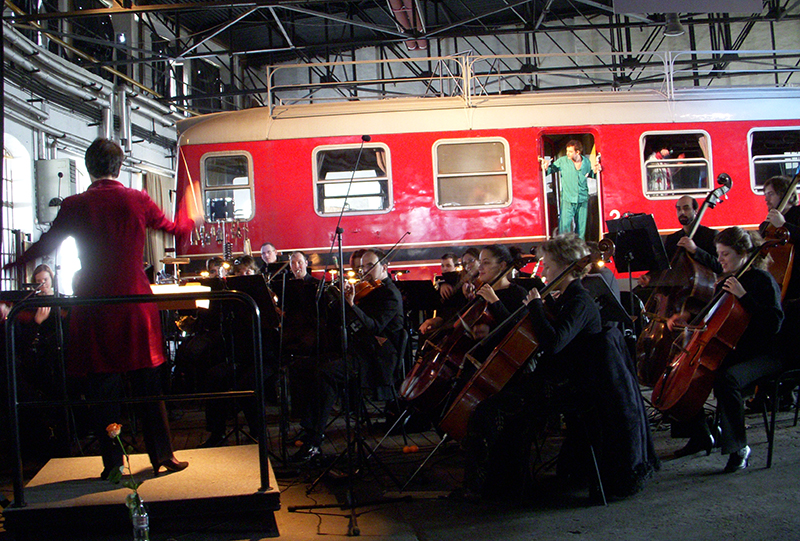Konstantia Gourzi complements the fragmentarily preserved opera with her own compositions. The premiere at Staatsoper Berlin was followed by other site-specific performances, carried out as a “mobile opera”.

The Project
Conducting Joseph Haydn’s Symphony No. 43 in E flat major was the starting point for the examination of his unknown, fragmentary works. Fascinated by Philemon und Baucis, a work that is rooted in Greek mythology and its gods, a complementary composition was created. While the original version was written for string puppets, the story is now located in contemporary life: the Olympian Council seems like the meeting of politicians, while the old couple Philemon and Baucis embody an intense example of faith and love.
Except from the overture, the music for the Olympian Council for instance is lost. The new composition follows the preserved libretto. Each god has his own “scene”, in which they have their say. That way, each god receives a characteristic instrumentation and melody, interrupted by the dialogues between theses “scenes”.
The original score by Haydn was composed for two oboes, two horns, timpani and strings. The new music features additional instruments: flute, saxophone, trumpet, trombone, percussion, cimbalom or hammered dulcimer, harp and piano. The piano is neither a replacement for the cembalo nor an accompanying chord instrument for the recitals, but a surprising element with improvisational character, aiming at expressing the intense freedom of the music.
Thus, Philemon and Baucis is not a historicising composition. It aims at a new experience of the original parts by mixing them with different modern elements. Opera is conceived as musical text and play in which singer-actors appear on stage not as “perfect voices” but as mediums of verbal articulateness combined with physical presence and emotions.
On the occasion of the performances at the Magazin of the Staatsoper Berlin, at the Hungarian Railway Museum in Budapest and at the Augustinus Church in Schwäbisch Gmünd, an adaptation for a smaller ensemble was written, supporting the intimacy of the plot in the second part.
The performance space is integrated in the concept as a main source. Thus, Philemon and Baucis can be carried out as a “mobile opera”, as a long-term experiment, in order to explore the impact of music under these special circumstances of the performance.
Composition commission by the Staatsoper Berlin, for chamber orchestra and singer-actors.
Performances
World premiere: 26 April 2003, Magazin building (today Boulez-Saal) of Staatsoper Unter den Linden, Berlin
Further performances: 27, 29, 30 April 2003 and 2, 3 May 2003
Orchestra: Ensemble echo, director: Immo Karaman, stage design: Alexander Polzin, dramaturgy: Ralf Waldschmidt, soloists of the Staatsoper, freelance performers, students of the Hochschule Hanns Eisler Berlin, conductor: Konstantia Gourzi
21/22 March 2009, Railway Museum, Budapest, as part of the Budapest Spring Festival
Orchestra: Dohnányi Orchestra Budafok, director: Balász Kovalik, conductor: Konstantia Gourzi
22 July 2010, Augustinus Church, Schwäbisch Gmünd, as part of the Festival für Europäische Kirchenmusik
Orchestra: Ensemble opus21musikplus, director: Nilufar Münzing, stage design: Alexander Polzin, conductor: Konstantia Gourzi
